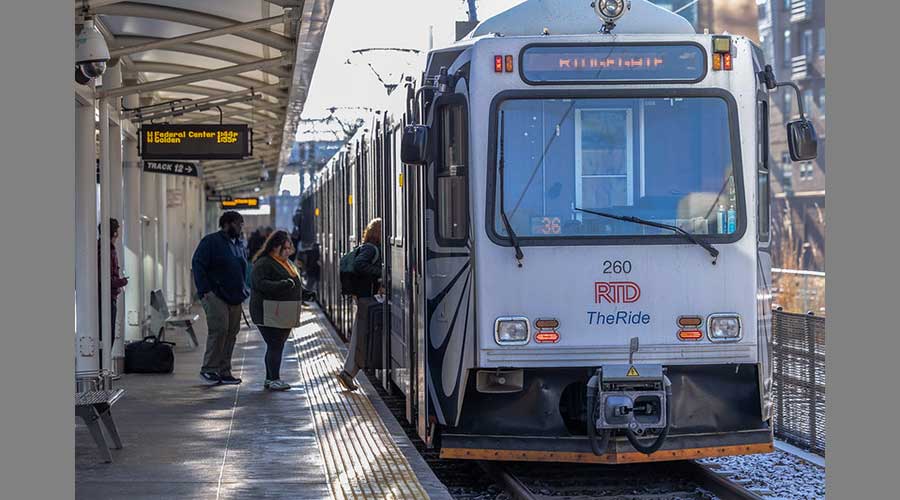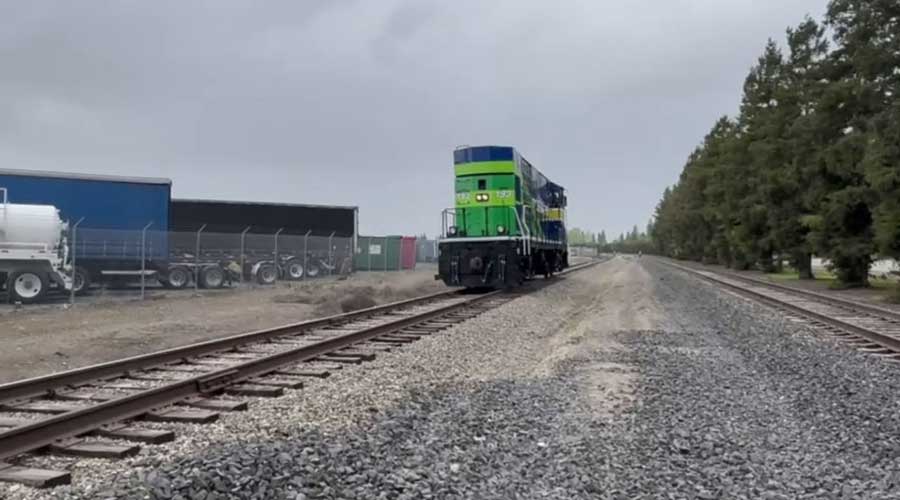Stay updated on news, articles and information for the rail industry
5/16/2013
Rail News: Railroading People
Sen. Nelson, CSX's McNey receive AAR's Chafee environmental awards
The Association of American Railroads (AAR) has awarded Sen. Bill Nelson (D-Fla.) the 2013 John H. Chafee Congressional Environmental Award, and CSX Transportation employee Rick McNey the 2013 John H. Chafee Environmental Excellence Award.
The awards are named for the late Rhode Island senator, who advocated for conservation and environmental causes, and appreciated the environmental benefits of rail transportation.
In Florida, Nelson has worked with the Everglades restoration efforts and tackled issues related to the public health effects of pollutants. In Washington, D.C., he worked with colleagues to pass the RESTORE Act, which allocates 80 percent of Clean Water Act fines paid by BP Oil to places affected by the Gulf Coast oil spill. Nelson also has worked to institute a ban on the sale and importation of Burmese pythons and other non-native snakes that destroy the Everglades ecosystem, and has worked with the U.S. Environmental Protection Agency and wood-preserving industry to address concerns about the health risks of arsenic in residential wood.
As CSX's manager of maintenance at the Curtis Bay Pier in Baltimore, McNey ensures federally imposed environmental standards are met, and has upheld a perfect record of compliance for 10 straight years. He also finds "innovative new ways" to help reduce the Class I's environmental footprint, according to AAR.
For example, McNey implemented a storm water management rain harvesting system that has reduced water consumption by 40 percent, or 108,000 gallons per day, at the Curtis Bay Pier facility. He also launched a project to upgrade lighting systems at the facility by installing energy-efficient light emitting diode bulbs, which helped reduce energy consumption by 40 percent. Another program called for reusing thousands of gallons of oil reclaimed at the facility in an oil-burning heater that heats the Curtis Bay machine shop. In addition, about 4,000 cubic yards of metal, 10,000 gallons of used oil and 100 large-capacity batteries are recycled at the facility annually.
The six other nominees for the Chafee award were:
• Ben Crandall, foreman general for Union Pacific Railroad in Draper, Utah, who suggested the Class I create an energy management position. Under Crandall's mentoring, that employee has implemented changes that could save $1.7 million and 32 million kilowatt hours annually. In an effort to eliminate waste, Crandall is working with various UP departments to design a locomotive filter shredder and crusher that will increase efficiencies, reduce environmental impacts and lower costs.
• Johnny Glenn, assistant regional chief engineering for CN, who helped implement a "Golden Broom" program to promote good housekeeping practices across the engineering department. The program reduces waste and provides a safer work environment. Glenn also has educated coworkers about the value of recycling and and reducing waste. Through his efforts, CN has saved about $165,000 annually by recycling items that otherwise would have gone to the landfill.
• Ray Jones, assistant division manager of mechanical operations for Norfolk Southern Railway, who has supported the restoration of the Elizabeth River and Chesapeake Bay. He worked with the Elizabeth River Project and Virginia Oyster Restoration Center to install concrete "reef balls" off the coral pier in Norfolk, Va., to establish a new oyster hatchery. Jones also was involved in a project to reclaim and reuse storm water at the NS terminal's coal pier for dust control and equipment washing, which has improved the recovery of coal dust in storm water runoff and reduced the amount of water NS has had to purchase from the municipal water supply. The effort saves up to 18.3 million gallons of water and $100,000 annually.
• Ross Thomas, manager of engineering for BNSF Railway Co., who has led efforts to test hundreds of thousands of yards of soil to determine the suitability of reusing the material. He also has provided input for relocating ponds, plugging and abandoning wells, and ensuring proper relocation and construction of new wetlands during the construction of a conservation corridor at the Logistics Park Kansas City Facility.
• Renee Strolis, director of fuel management for Amtrak, who has helped ensure Amtrak meets EPA environmental and fuel performance standards. She also collaborates with others to implement climate programs, training and communications to raise environmental awareness throughout the organization. In addition, Strolis has worked to identify and implement fuel conservation initiatives, such as idling-reduction and train-handling measures, and played a vital role in a year-long trial to evaluate the feasibility and effectiveness of alternative fuel.
• Steve Grant, director of transload services for Canadian Pacific, who helped ensure the Class I's trainload facilities were built in an environmentally safe way. Working with various departments, he looks for appropriate sites, and communicates with local officials and members of the public to inform them about the construction and educate them about the action being taken to address potential environmental impacts.


 2025 MOW Spending Report: Passenger-rail programs
2025 MOW Spending Report: Passenger-rail programs
 Gardner steps down as Amtrak CEO
Gardner steps down as Amtrak CEO
 Guest comment: Oliver Wyman’s David Hunt
Guest comment: Oliver Wyman’s David Hunt
 Women of Influence in Rail eBook
Women of Influence in Rail eBook
 railPrime
railPrime







